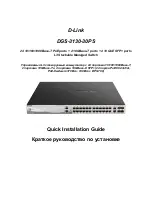
iES26GF
User’s
Manual
UM-iES26GF-1.2.3-EN.docx
Pages 43 of 169
The following table describes the columns and labels for the
Aggregation Group Configuration
screen.
Label
Description
Group ID
Indicates the ID of each aggregation group.
Normal
means no
aggregation. Only one group ID is valid per port.
Port Members
Lists each switch port for each group ID. Select a radio button to include
a port in an aggregation, or clear the radio button to remove the port
from the aggregation. By default, no ports belong to any aggregation
group. Only full duplex ports can join an aggregation and the ports must
be in the same speed in each group.
Save
Click
Save
to save changes.
Reset
Click
Reset
to undo any changes made locally and revert to previously
saved values.
LACP Port
This page allows you to enable LACP functions for grouping ports together to form single virtual
links, thereby increasing the bandwidth between the switch and other LACP-compatible devices.
LACP trunks are similar to static port trunks, but they are more flexible because LACP is compliant
with the IEEE 802.3ad standard. Hence, it is interoperable with equipment from other vendors that
also comply with the standard. You can change LACP port settings on this page.
Figure 48 - LACP Port Configuration interface
















































